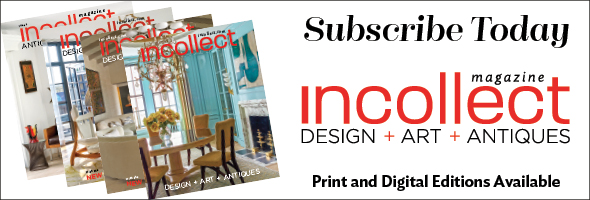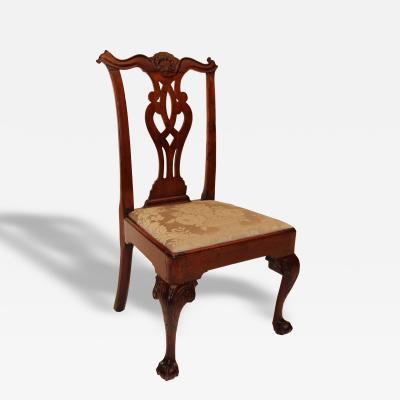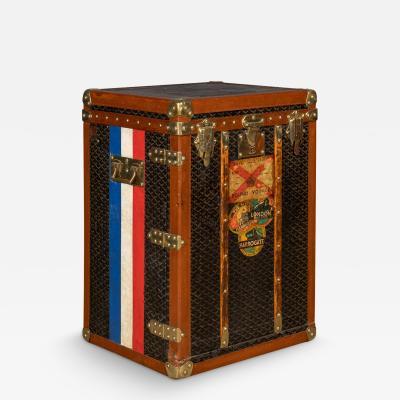A Guide to Eighteenth-Century Windsor Chairs
A Guide to Eighteenth-Century Windsor Chairs
by Nancy Goyne Evans
The Windsor chair originated in England during the early eighteenth century. Unlike other chairs of contemporary date, which have open seat frames to receive upholstery or a woven bottom, the Windsor has a solid plank seat. As the principal unit of construction, the Windsor plank fastens the turned and shaved members of the chair back and base, although the two structures are independent of one another.
The name Windsor was soon associated with the new style.1 Rustic seating of related form was used on the grounds of Windsor Castle during the early eighteenth century, and the beechwood hills surrounding the town of Windsor provided timber used by the London chairmakers for their nascent Windsor trade.
The first English Windsors were used principally outdoors—on lawns and terraces of suburban homes and on the grounds of country estates. The popular finish was green paint made from white lead, oil, and the pigment verdigris. The blue-green color, similar to the oxidation on domes and statuary, served to camouflage the furniture in the landscape. When the English Windsor was introduced to the Colonies in the mid-1720s, green was the predominant paint color for these chairs. In America, the Windsor was principally an indoor chair, having already begun being used as such in England.2
The first American Windsors were produced in Philadelphia around the mid-1740s; however, little remains from this period. Most early examples date to the 1750s and 1760s (Figs. 1, 2), when both high-back and low-back chairs were in the market. The tall chair was probably available first, although Figure 1 exhibits earlier design characteristics than Figure 2. With one exception (the continuous-bow Windsor armchair, as seen in Fig. 7), eighteenth-century American Windsors closely follow patterns developed in England. Even so, the American product is fairly easy to recognize: slimmer bent parts; a thicker seat plank with front legs socketed farther from the edge; and more intricate turnings.3
 | |
| Fig. 1: Low-back Windsor armchair, Philadelphia, PA, ca. 1755–1760. Yellow poplar (seat) with maple and oak. H. 27 3/4", W. (arms) 28 1/2", D. (seat) 17". Courtesy of Winterthur Museum. 64.1526. |
The Low-Back Windsor Armchair
The basic low-back form is that of a roundabout, or corner, chair adapted from formal design to stick-and-socket construction. Because the weight of the sitter is concentrated in the low back, a heavy, three-part, sawed and shaped arm rail maintains structural strength. The ogee-curved arm pieces bring together the ends of the heavy back rail using lap joints secured with rosehead nails or wooden pins.The modeled tips of the back rail provide a smooth visual transition between the planes of the arms and the rail top.
The low-back Windsor in Figure 1 has two turned members with elements dating slightly earlier than those of Figure 2. The arm post balusters have spherical bodies and long, slim necks, and the post profile from the neck downward is duplicated in each half of the medial stretcher, thereby visually coordinating the upper and lower structures of the chair.
Other features of this chair also typify early Windsor construction. The large D-shape seat is deeply shaped on the top surface of the 2-inch plank. Double scoops accommodate the sitter’s legs, separated by a saddlelike pommel at the front edge. The side edges are lightened by a deep chamfer below a short vertical surface. The flat platform socketing the posts and spindles on the plank top is separated from the modeled area by a wide channel that swings around the front of the posts and continues backward along the plank edge. The baluster-style legs are especially typical of early Windsor production in Philadelphia. Small round-head spool-and-ring turnings form visual transitions above and below the cylinders. The “ball” feet were originally oval, but have been worn down.
The low-back chair is the least common of the eighteenth-century Windsors. Besides general use, it served as a desk chair, because the rail is low enough for the seat to be drawn under the open leaf of a fall-front desk.4
Once the Windsor was established in the market, it became a popular prop in which prominent individuals would sit for a portrait: Ralph Earl (1751–1801) painted the Connecticut statesman Roger Sherman (1721–1793), a signer of the Declaration of Independence, in a low-back Windsor; and a high-back Pennsylvania chair stood for many years in the home of Moses Brown (1738–1836), a merchant prince of Providence, Rhode Island, who is depicted in his declining years seated in a chair similar to the one shown in Figure 2.5
 | |
| Fig. 2: High-back Windsor armchair, Philadelphia, PA, ca. 1760–1770. Yellow poplar (seat) with maple, oak, and hickory. H. 44 5/8", W. (seat) 25 3/8", D. (seat) 16". Private collection; photography courtesy of Winterthur Museum. |
The High-back Windsor Armchair
Although high-back Windsor armchairs were being made in Philadelphia by the mid-1740s, the refined models commonly associated with the design were not introduced to the local market until after 1750 (Fig. 2). High-back and low-back Windsors, which evolved together, are similar to the point of the arm rail. Most high-back chairs have a lightweight steamed and bent arm rail that provides adequate support, as the sitter’s weight is distributed along the entire length of the tall back. Oak was the Windsor chairmaker’s principal choice for bentwork, as indicated in the crest piece, which exhibits the distinctive figure of that wood. In pre-Revolutionary years Philadelphia work commonly contained carved crest terminals with large volutes resembling those in formal Queen Anne chairs. The name high-back was current in the colonial period; comb-back is a more recent term.6
A notable design change introduced toward the end of the 1750s in the understructure of the Windsor is the substitution of a plain, swelled medial stretcher similar to the side braces (Fig. 2) for the double-baluster profile (Fig. 1). Because the tall chair in our example now lacks paint, a decorative treatment that originally covered all Windsors, it is possible to identify the wood of the turned members as maple. This close-grained hardwood proved excellent for achieving the detailed turnings found in eighteenth-century Windsor work. In addressing the need for resiliency in a chair back, to assure that the slim spindles withstood the stress of general use, chairmakers usually selected hickory. In the words of the French botanist and silviculturist François André Michaux, Jr. (1770–1855), who toured America in the early nineteenth century, hickory was the wood “found to…be the most elastic.”7
The Sack-back Windsor Armchair
During the early 1760s Philadelphia chairmakers, responding to new design influences from England, introduced a sack-back armchair to the market. The construction encloses the spindle tops within a steamed and bent bow above the arm rail (Fig. 3). The coastal trade in furniture and the migration of craftsmen brought the design to New York City, which along with Newport, Rhode Island, comprised the non-European centers of Windsor chairmaking before the Revolutionary War. The sack-back design remained current into the 1780s, the date of the New York City chair seen in Fig. 3.8
Here, notable changes occurred in the design of the leg turnings and seat. Craftsmen replaced the straight cylinder and ball foot with a long, tapered terminal, and the D-shape plank gave way to an oval seat with rounded edges. The new leg style accelerated production and eliminated the fragile neck above the ball foot. Typical of New York work in the late eighteenth century are full baluster turnings—the sizable swells repeated in the leg tops, stretchers, and arm posts. Spindles, termed sticks in records, taper from bottom to top. They were shaved to form using hand tools and a clamping bench, or “shaving horse.” The spindles fasten into a yellow poplar (Liriodendron tulipifera) seat, the typical plank choice in the Mid-Atlantic region.
 |
| Fig. 3 (left): Sack-back Windsor armchair, possibly by Thomas Ash I and William Ash I (active 1783–1794), New York City, ca. 1783–1790. Yellow poplar (seat) with maple, oak, and hickory. H. 34", W. (arms) 24 1/2", D. (seat) 16 1/4". Private collection; photography courtesy of Winterthur Museum. Fig. 4 (right): Fan-back Windsor side chair, Rhode Island, ca. 1790–1800. Yellow poplar (seat) with maple and other woods. H. 36 1/4", W. (crest) 21 1/16", D. (seat) 15 1/2". Private collection; photography courtesy of Winterthur Museum. |
The Fan-back Windsor Side Chair
A fan-back side chair of Windsor construction was available to consumers from the end of the 1770s (Fig. 4). Philadelphia artisans crafted the first examples based on English prototypes. The new chair was introduced in New England during the 1780s, when the Windsor craft expanded quickly in the postwar economy in response to the rising demands of the middle class for affordable yet stylish seating. Of smaller size than its predecessors with arms, the fan-back chair was usually purchased in sets of six. Within a decade the Windsor side chair had been adopted everywhere as the popular seat for dining. Stephen Girard (1750–1831), a rising merchant of Philadelphia, ordered “Dineing Windsor Chairs” for his expanding export trade as early as 1786 from the local chairmaker William Cox (active 1768–1811).9
Several features of the fan-back chair elicit comment. The crest, which initially imitated that of the high-back chair (Fig. 2), lost its labor-intensive carved volutes in response to chairmakers’ needs to speed production to meet increasing demands and for less expensive chairs in the consumer market. The typical fan-back post has a long central baluster, a swelled element at the top, and a short taper at the base. The elements, which are a variation of those in the legs, may differ slightly in character and proportion from region to region. A shield-shape seat, based on the “compass bottom” of early Georgian formal furniture, became the standard plank for the side chair. The feet of Figure 4 exhibit a subtle double taper typical of some Rhode Island work dating to the 1790s. The medial stretcher has tipped ends in place of the more common rings flanking the center swell, a feature most typical in Rhode Island and eastern Connecticut.10
 | |
| Fig. 5: Bow-back Windsor side chair, branded by William Seaver (active 1793–1837), Boston, MA, ca. 1795–1800. White pine (seat) with birch and other woods. H. 37 3/8", W. (seat) 17 1/2", D. (seat) 16 1/16". Private collection; photography by Winterthur Museum. |
The Bow-back Windsor Side Chair and Armchair
The 1790s marked the high point of the eighteenth-century Windsor chairmaking craft. The new national economy was burgeoning, and as a result the middle-class consumer market flourished. Production of Windsor furniture had spread from a few early urban centers to almost every town and rural village. The Windsor had replaced slat-back and banister-back chairs as the premier vernacular seat in the American home.
The bread and butter of the Windsor trade in the 1790s was the bow-back side chair (Fig. 5). Introduced in Philadelphia in the mid-1780s, the new pattern was being made in all production centers within a few years. The design was more suitable for use around the dining table than the fan-back chair’s, as the round back economized on space—an important consideration in an era when families tended to be large. Figure 5, from the shop of William Seaver (active 1793–1837), typifies the fine quality of many Boston Windsors of the 1790s. Following area work, the bow face is finished with a deep, broad channel. The saddled seat of white pine is modeled at the front corners with cushioned surfaces above rising edges. The leg profile is a Boston signature, with its short, bulbous baluster, thick ring, and swelled-taper foot, the last of these having been adapted from Rhode Island work (Fig. 7). The cylindrical-style rings of the medial stretcher were also exclusive to the Boston area.11
The bow-back chair was the first Windsor designed with an en suite side chair and armchair (Fig. 6). The armchair retains the shield-shape seat of the side chair, but the plank is broadened to provide adequate space for the sitter. Figure 6, from the shop of Joseph Henzey (1743–1796), demonstrates the transformation in Philadelphia-turned work shortly after the bow-back pattern was introduced. Simulated bamboo turnings were adopted in other craft centers at the end of the 1790s.12
In contrast to the channeled surface of the Boston bow, the Philadelphia bow is crowned, with a narrow bead at either edge. The arms attach to the bow in mortise-and-tenon joints borrowed from cabinetwork. The Philadelphia bow-back arm slopes forward in an ogee curve and ends in a scrolled nub. Many posts are segmental. For an additional cost, purchasers could choose a cabinet wood such as mahogany for the arms. Stained and varnished, these arms formed a striking contrast to the painted surfaces. By the 1790s, customers could choose from a selection of colors: green, black, white, blue, yellow, and various shades of brown. Pale yellow was well suited for simulated bamboo work because it approximated the natural color of the plant.13
 |
| Fig. 6 (left): Bow-back Windsor armchair, branded by Joseph Henzey (1743–1796), Philadelphia, PA, ca. 1785–1790. Yellow poplar (seat) with maple, oak, hickory, and ash. H. 37 5/8", W. (seat) 20 1/2", D. (seat) 17 3/4". Courtesy of Winterthur Museum. 63.673. Fig. 7 (right): Continuous-bow Windsor armchair, Rhode Island, ca. 1792–1796. Maple with other woods. H. 37 3/8", W. (arms) 21", D. (seat) 17 1/8". Private collection; photography courtesy of Winterthur Museum. |
The Continuous-bow Windsor Armchair
Regarded today as a classic in Windsor design, the continuous-bow chair (Fig. 7) was developed in New York City about 1790. The sweeping profile of the bow is based on the French bergère chair, examples of which were produced at this date by local cabinetmakers. This is the only eighteenth-century Windsor pattern based on a non-English prototype, and it is the only Windsor design dating before 1810 introduced to the American market in a place other than Philadelphia. The pattern was never produced in Pennsylvania, where the bow-back armchair was the pattern of choice.14
Through the close communication between New York and southeastern New England via the waterborne trade on Long Island Sound, knowledge of the continuous-bow design quickly spread to Rhode Island and southeastern Connecticut. The Rhode Island continuous-bow chair in Figure 7 has several features in common with Figure 4: The seat is similarly modeled, and the medial stretcher has variant rounded tips. Swelled feet, which first appeared in Rhode Island work in the early 1780s, were refined by the end of the decade. The bow face introduces still a third pattern: a flat surface with a bead at either edge that copies the New York style. Because the back of the continuous-bow chair is not as structurally sound as some designs, many chairs were strengthened with a pair of bracing spindles mounted behind the back and anchored in a small seat projection, absent on this example.
In reviewing eighteenth-century Windsor design, it is apparent that basic profiles and surface modeling, which at times achieved sculpturelike quality, were key to visual interest. The picture would change in the nineteenth century when backs were square and vertical, and when horizontal elements were often flattened on the forward surface and sometimes enlarged to receive the painted and stenciled ornament that became part of the new design criteria. Windsor patterns now reflected the current interest in neoclassicism that was sweeping Europe and that was transferred to America through design books and imported furniture. Windsor chairmakers quickly took their cues from formal furniture of domestic production and the newly fashionable painted and woven-bottom fancy chair. Interest in hand crafted Windsor seating remained strong until the mid-nineteenth century, when the factory replaced the craft shop.
1. The first name associated with the new form was “Forest Chair.” Nancy Goyne Evans, American Windsor Chairs (New York: Hudson Hills Press, 1996), chap. 1, p. 40.
2. Evans, American Windsor Chairs, chap. 1, p. 4.
3. Evans, American Windsor Chairs, chap. 3.
4. The Philadelphia low-back Windsor chair is discussed in Evans, American Windsor Chairs, pp. 85–88.
5. The portraits noted in this paragraph are discussed in Evans, American Windsor Chairs, pp. 86, 87.
6. The Philadelphia high-back Windsor chair is discussed in Evans, American Windsor Chairs, pp. 80–86.
7. F. Andrew Michaux, The North American Sylva, trans. Thomas Nuttall, 5 vols. (Philadelphia: J. Dobson [1841]), I, 82.
8. Philadelphia and New York City sack-back Windsor chairs are discussed in Evans, American Windsor Chairs, pp. 95–98, 196–198.
9. William Cox bill to Stephen Girard, April 28, 1786, Girard Papers, Girard College, Philadelphia, PA (microfilm, American Philosophical Society, Philadelphia).
10. Philadelphia and Rhode Island fan-back Windsor chairs are discussed in Evans, American Windsor Chairs, pp. 99–102, 268–270.
11. Boston bow-back Windsor chairs and the work of William Seaver are discussed in Evans, American Windsor Chairs, pp. 351–352, 356–357, 358–362.
12. The introduction of bamboo-style turnings in Philadelphia is discussed in Evans, American Windsor Chairs, pp. 102–107.
13. Philadelphia bow-back Windsor chairs are discussed in Evans, American Windsor Chairs, pp. 103–107.
14. The development of the continuous-bow pattern is discussed in Evans, American Windsor Chairs, pp. 199–201, 388.
Nancy Goyne Evans is an independent furniture historian and former research fellow of the Winterthur Museum. She has written two books on Windsor furniture, American Windsor Chairs (1996) and American Windsor Furniture: Specialized Forms (1997). Currently, she is preparing a third book dealing with the craft shop, marketing, and consumerism.
This article was originally published in Antiques & Fine Art magazine, a fully digitized version of which is available at www.afamag.com. AFA is affiliated with Incollect.com.
 |































